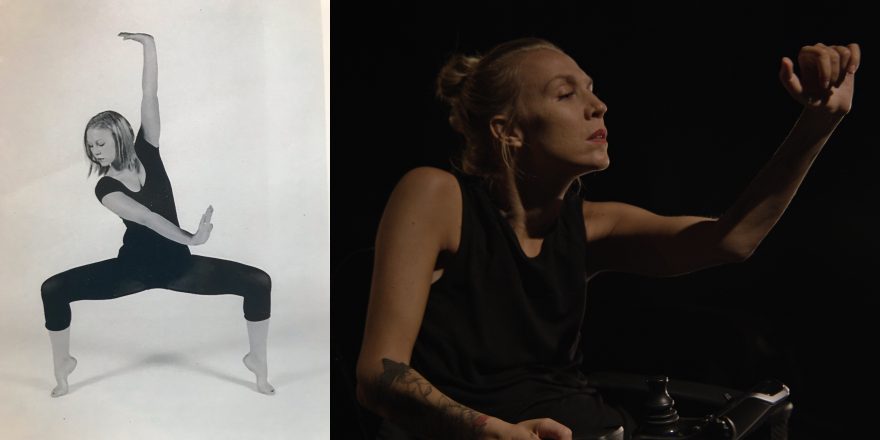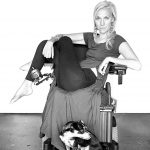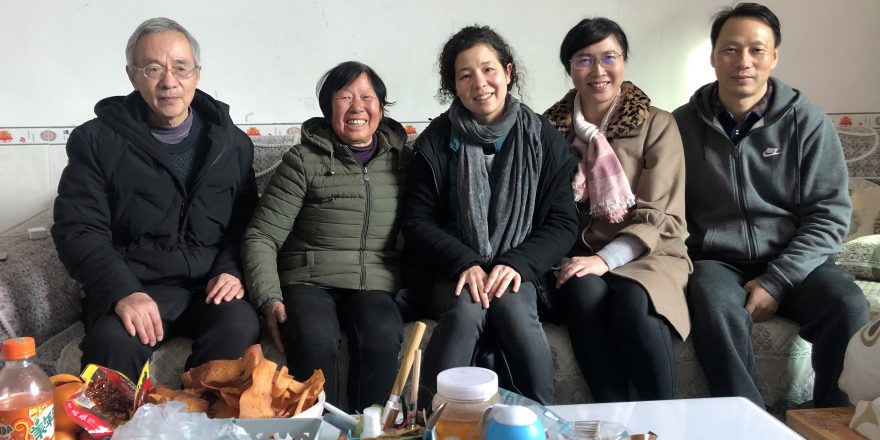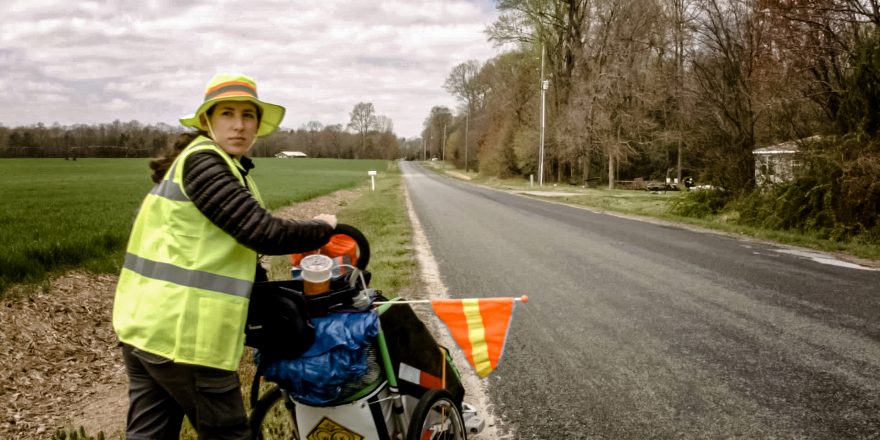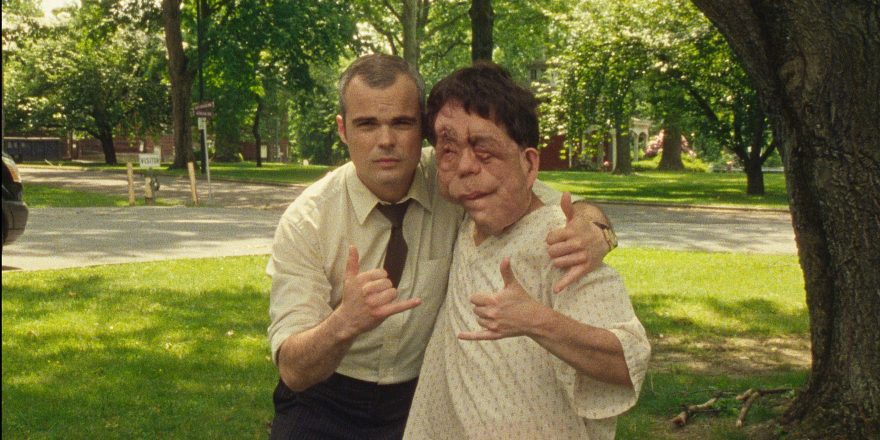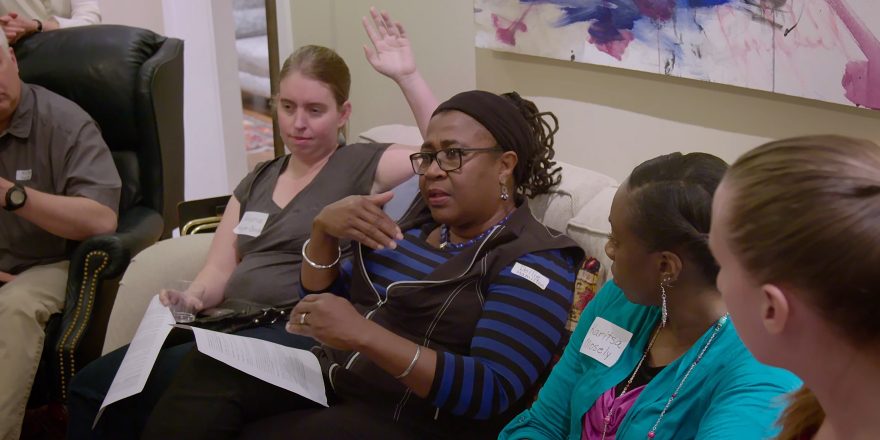I’m sitting here, running my paralyzed, tiny fingers — devoid of muscle and volitional movement — around the side of my coffee cup. I watch intently as I slowly and deliberately stretch my fingers around it, circling my wrist inward so that my thumb wraps around the front, mimicking a grip. I then pull my wrist back, bending it as hard as I can to tighten that grip around the mug and I carefully lift it to my lips. I take a sip and set it back in my cup holder on my wheelchair. There’s almost a sensuousness to it now, this slow, methodical hand dance to quench my thirst. I definitely didn’t see it that way when I first learned this technique almost 10 years ago. Back then, it was painfully frustrating and time-consuming, infantilizing even, that I was having to relearn something so simple. I was a grown-ass woman who could do fouettés on beautifully calloused bare feet, and suddenly I was relearning how to pick up a cup?
Needless to say, a lot has changed …
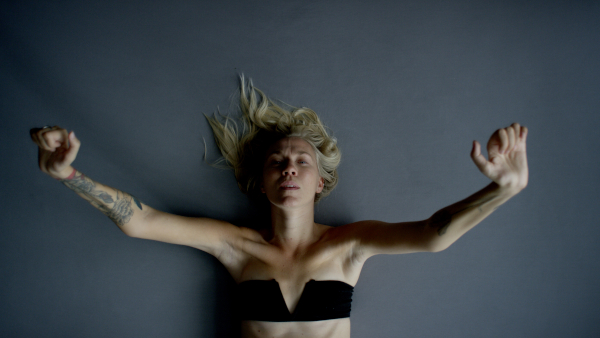
For the last five years, I’ve devoted a lot of my life to making a documentary film about my experience becoming disabled. I never planned on making a film, it just sort of happened. Yet here we are now, as Move Me just premiered at the Full Frame Documentary Film Festival. Because of this process, and the experiences I had during it, I’ve undergone a process of transformation in my life that I needed in order to return to myself, and begin to truly love this new version of who I am. It was a process and practice that many of us forget is our superpower as human beings: adaptation.
Making Move Me created a nurturing container, a crucible of sensitivity, creativity, love, challenges and respect, that once melted together, brought healing that I think we all needed when 2020 arrived. We’ve all been asked to adapt since the pandemic, and pretty profoundly in our own ways. We’ve all lost things. When I was injured, I lost my body as I knew it, and just before the pandemic I lost my dad — both things that defined me in many ways: as a daughter, a singer, a dancer, a yoga teacher, and an independent woman.
It’s been almost 10 years since I was paralyzed, and only in the last two have I begun to connect with my body in a way that feels like a personal homecoming. It’s still new and different sometimes, this strangely familiar home. I miss some of the old things, but they no longer live here in this body. My sensation from the chest down — gone, replaced by a static that’s become the new normal. What were once a mysterious and oftentimes terrifying series of bodily messages are now familiar signals. When my body tingles and my blood pressure rises, it’s a process of elimination, a guessing game to relieve these sensations that I now understand as warning signs, usually (hopefully) telling me to just go pee. I’ve learned many of the noises these halls carry in the dark. I have wandered these empty rooms, making them mine, finding comfort within their walls.
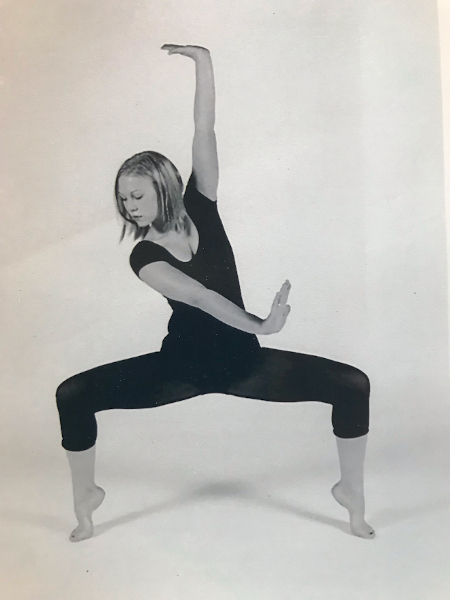
I remember the day I learned about abstraction in my dance composition class in high school. I went to the Perpich Center for Arts Education, a public arts high school in Golden Valley, Minnesota, where I majored in dance. Each student spent the first half of the day doing various academics and the second half was dedicated to the art areas of our focus: dance, theater, photography/film, music, visual and literary arts. On this particular day, my class was working with our awesome musical accompanist and teacher, Tom Kanthak, who was sharing with us different tools for improvisation and choreography. We were assigned to come up with a phrase of movement and then abstract that phrase in multiple ways and share it — whether it be changing the level, the tempo, the quality, the direction, the part of your body used, whatever. It was an exercise in creativity that I didn’t yet realize would benefit my life in so many profound ways.
What happens when you’re given limitations? How do you play with them and even possibly feel liberated by them?
I lost a lot when I was injured, no doubt, and I still feel that on a daily basis, sometimes more deeply than I can say. I have grieved in ways that have erased me and drawn me anew, sometimes existing in a blur of chaotic, disjointed sketches and other times more graceful strokes. But I felt a shift once the grief lifted just enough, and on its own time, when I gave myself permission to think about who I wanted to be in this new existence.
How many times in our lives are we granted that?
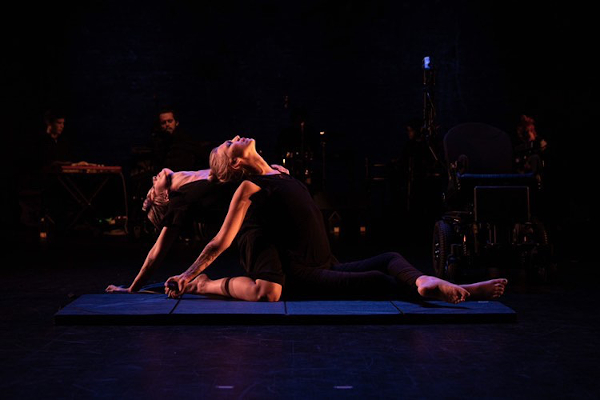
It seems like high-school graduation — that momentous step into adulthood — is the only commonly shared experience when we’re allowed to think about who we want to be and what we want to do with our lives when we “grow up”. But what if we’re just always growing up? Practicing adaptation and reinvention throughout our lives. Giving ourselves perpetual permission to grow and change. What if redefining and ultimately undefining ourselves became a practice we made routine?
It seems like we could consistently be filling a toolbox throughout our lives with our experiences of loss and rebirth as we grow and change. We could begin to see ourselves as more fluid beings within this universal experience of life, surrendering to the flow and therefore thriving with more grace, joy and opportunity.
For the longest time, I put dance to one side. My own internalized ableism and grief got the best of me — understandably, as they are tough and unpredictable forces — and being a dancer was not something I saw as a possibility anymore. In my mind, that chapter of my life was over, and I lost more than my body — I lost my purpose, my social outlet, my physicality, my career, my freedom, my spontaneity … many things that defined me. And I learned that the things that define us can easily confine us. Unless we are able to adapt.
It wasn’t until a friend, with my shared experience as a quadriplegic, asked me to choreograph a live show called A Cripple’s Dance, that I was able to step away from my own ego, grief and pain. It was no longer just about me, I guess, it was about helping him achieve his dream, too. And within that surrender, that yes, I was also able to achieve mine. I was finally able to lean into the skills I had acquired for years as a dancer, and begin to improvise through my life, abstracting how I saw myself and how I expressed myself through movement, all on film.
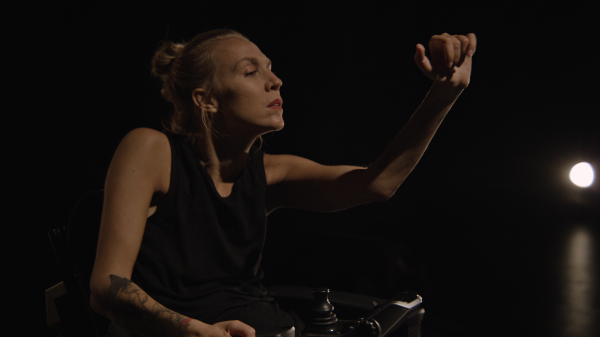
I was a part of a team, as subject and co-director alongside my film partner, Daniel Klein, who made me feel safe enough to share the most intimate parts of myself. Because of their sensitivity and artistry, I was able to bring forth my most authentic and vulnerable self while I was also grieving. I was able to find myself as an artist again, through dance and film, and friendship.
I wonder how many times we think that something is gone forever in our lives, when so often we simply need to redefine our relationship with that thing. Turn it upside down and change our perspective and how we relate to something, whether it’s the body we’ve lost or our father who has passed. It’s true, I lost my life as an able-bodied dancer, but I’ll always be a dancer. And I lost my dad, but he’ll always be my dad. I have a new relationship to dance and with my dad, whose depth and beauty still unfold.
I’ve learned in the last decade that we have to be in a constant place of investigation of our lives and who we are in any given moment. That is both our privilege and our responsibility — to get to know ourselves and love ourselves throughout our lives, because we are always changing. Because we can be ourselves but not actually know or love ourselves, and that’s a hard place to be. It’s work, no doubt, but it’s the most important work we’ll ever do.



